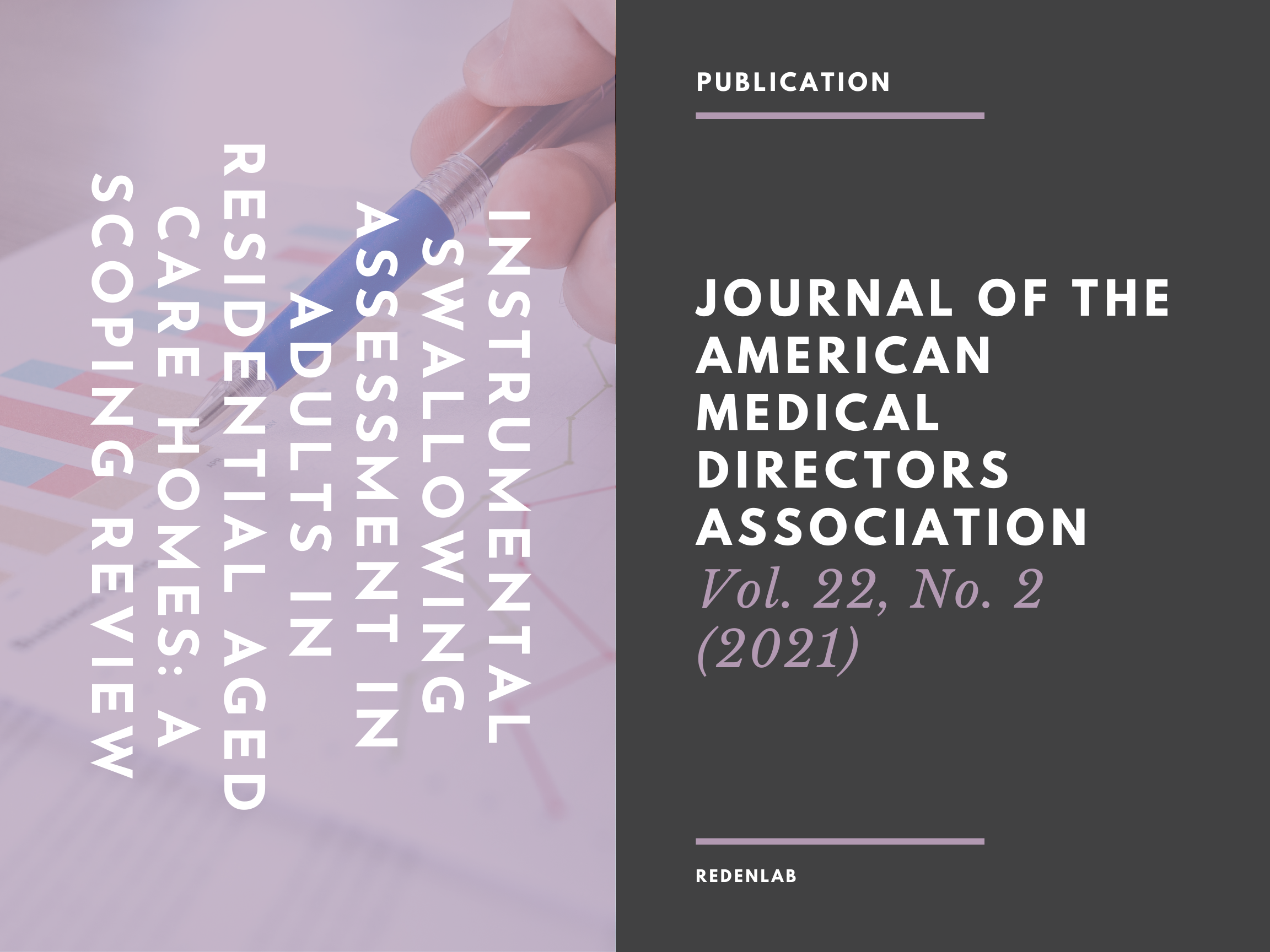Instrumental swallowing assessment in adults in residential aged care homes: A scoping review

Objectives
To systematically describe evidence on the use of instrumental swallowing assessment for residents of aged care homes.
Design
Scoping review using the Joanna Briggs Institute methodology for scoping reviews.
Setting and Participants
Published peer-reviewed and gray literature written in English between 2000 and 2020 about instrumental swallowing assessment (ISA) in adults in residential aged care homes (RACHs).
Measures
A systematic, 3-tiered search of databases including Medline, CINAHL, Embase, Scopus, and Cochrane Database of Systematic Reviews, and gray literature databases was conducted. Content analysis identified common themes.
Results
Forty-two sources, 30 from peer-reviewed journals, 12 gray literature publications, and 66 websites of mobile ISA providers that discussed videofluoroscopic swallowing studies (VFSS) and/or fiberoptic endoscopic evaluation of swallowing (FEES) use in RACHs were included. Most peer-reviewed sources were referenced narratives or surveys of speech pathology practice patterns (53.3%). Researchers in 3 studies used onsite mobile FEES and in 2 studies off-site VFSS, with adults living in RACHs, as part of their research design (16.7%). There were 66 mobile instrumental swallowing assessment provider websites, based within the United States. Three countries (Australia, United States, United Kingdom) had professional guidelines that stipulated minimal requirements for the safe and appropriate provision of ISA services across settings. Themes identified across sources included (1) the approach to swallowing management and clinical indicators for ISA, (2) the role of ISA, (3) service and consumer influences on ISA, and (4) mobile FEES.
Conclusions and Implications
There is a paucity of quality research on instrumental swallowing assessment in adults living in RACHs. There are broad regional and international variances in the way that videofluoroscopy and FEES are accessed and used. A more robust evidence base is required to guide health professionals to design tailored ISA care pathways for residents of RACHs, to achieve high-quality health, social, and economic outcomes.
Click here for more details
